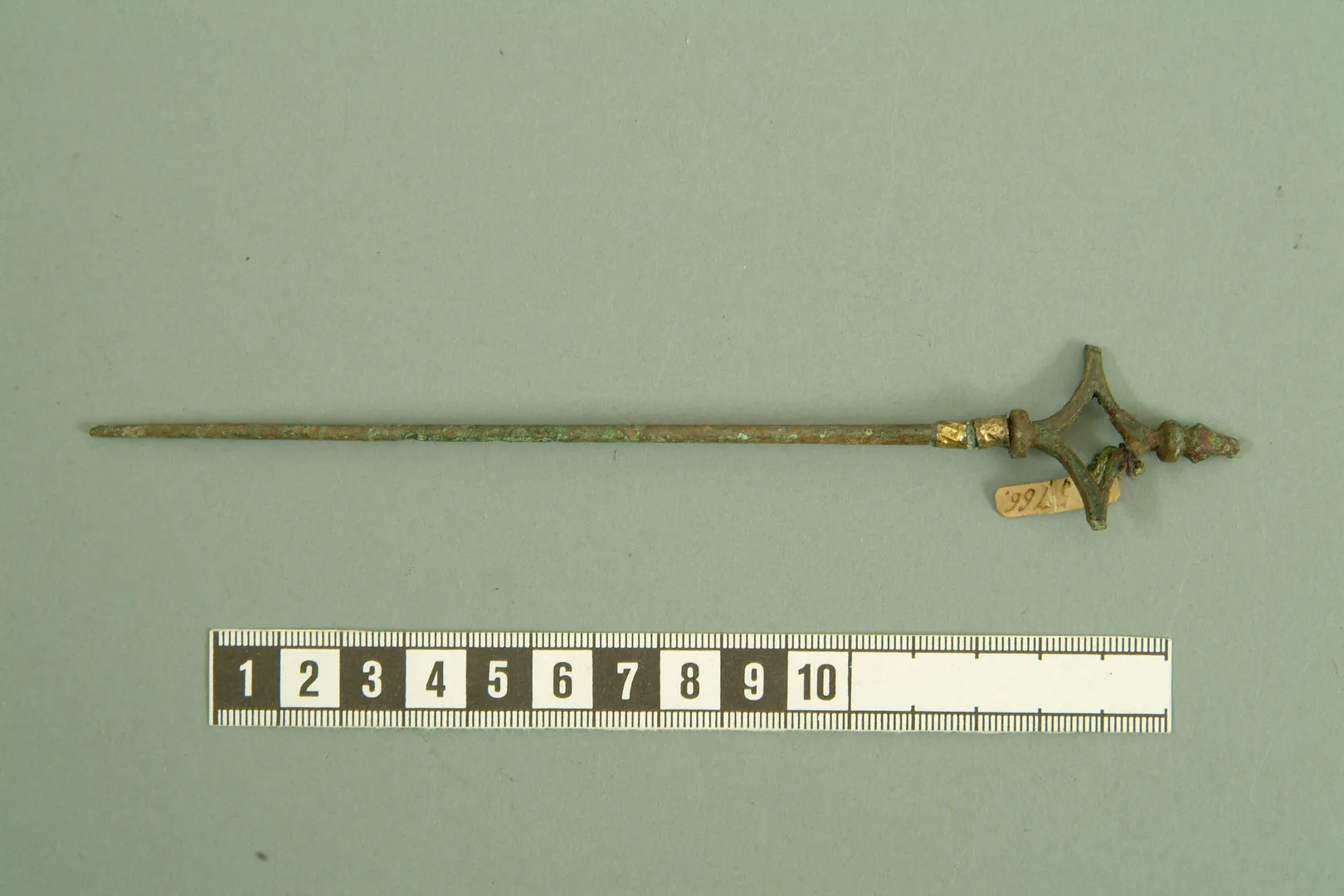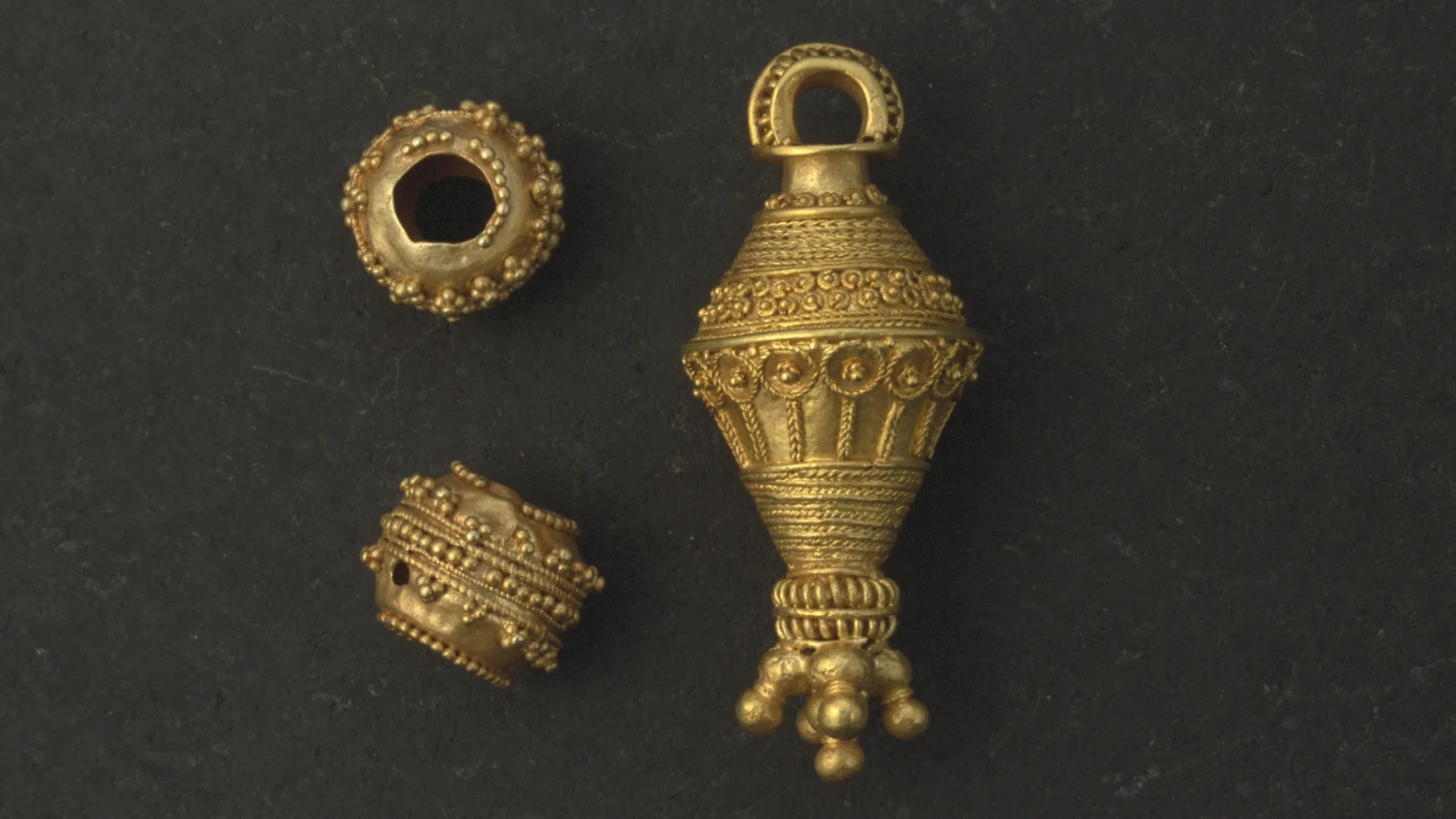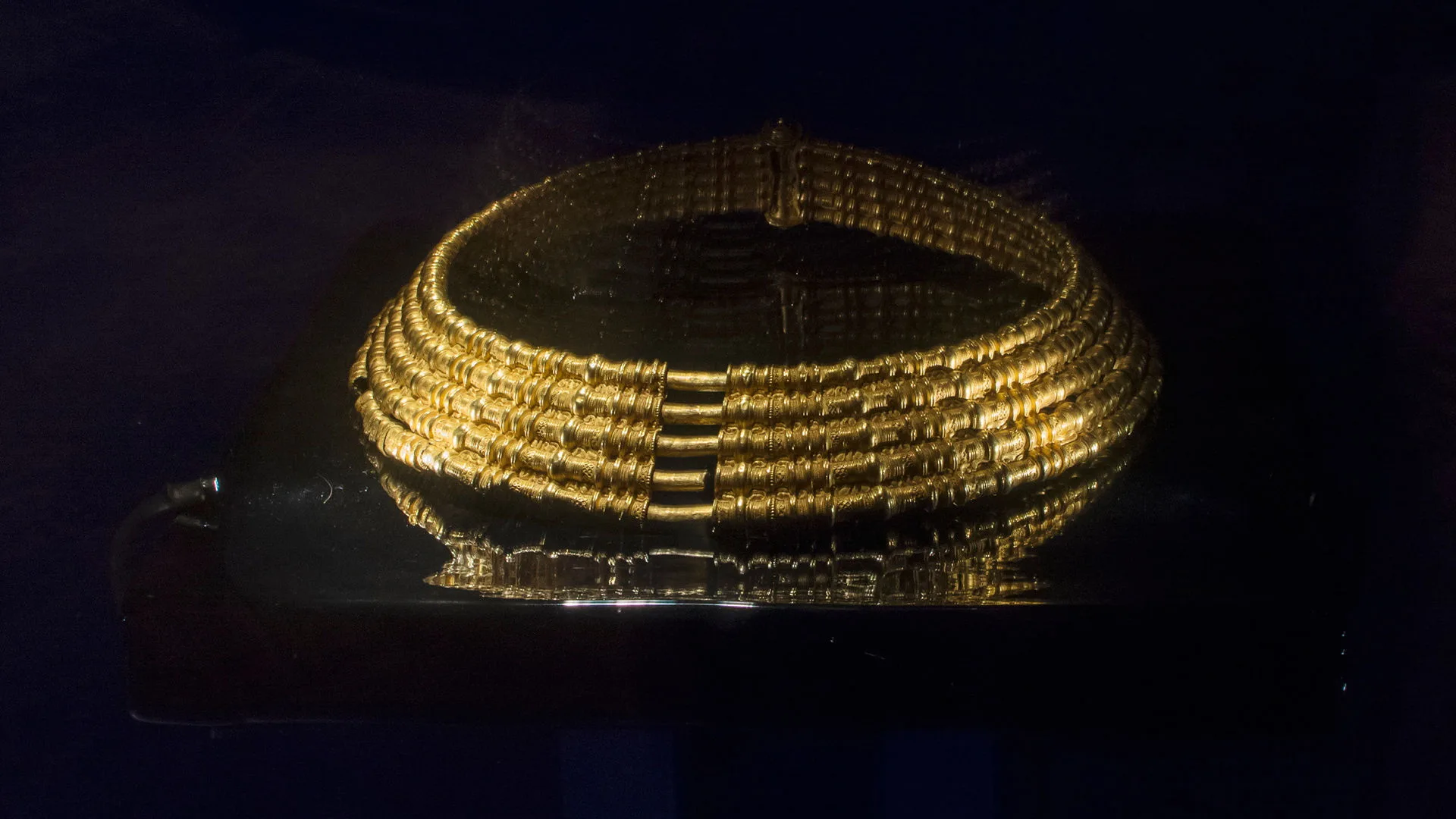Prehistoric hairpins
Bronze Age
1700 BC – 500 BC
Iron Age
500 BC – AD 1100
Viking Age
AD 800 – AD 1100
They have received relatively little attention from archaeologists, but it has recently been suggested that they may have been used as hairpins. If this interpretation is correct, they would be part of a hairstyle trend that emerged in the Nordic region under the influence of the Roman Empire where elaborate coiffures were all the rage. Hairpins from Roman territories have also been preserved.

Hairpin with cross-shaped end
On view at Historiska museet in the exhibition Forntider 1
The pins in the collections of the Swedish History Museum were found at the temples of the buried individuals. While this does not necessarily rule out their use in hair arrangement, it is equally possible that they were used to fasten a headscarf covering the hair.
Perhaps this was a marker of adult or married women. We know that certain types of jewellery were reserved for this group, and it is not unlikely that elements of dress, such as a veil, carried similar connotations.





